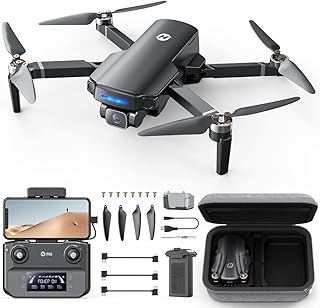The Role of Drones in Disaster Relief: A Flying Lifeline
Drones have emerged as powerful tools in disaster relief, revolutionizing response efforts and providing critical support in a multitude of ways. Their unique advantages, including agility, accessibility, and cost-effectiveness, make them invaluable assets in situations where time is of the essence and traditional methods fall short.
Here's how drones are making a difference:
1. Rapid Assessment and Situational Awareness:
* Aerial Surveillance: Drones equipped with high-resolution cameras and thermal imaging provide real-time, bird's-eye views of affected areas. This enables responders to quickly assess the extent of damage, locate survivors, and identify critical infrastructure needs.
* Damage Assessment: Drones can capture detailed imagery of collapsed buildings, damaged roads, and flooded areas, allowing for precise damage assessment and prioritizing rescue efforts.
* Mapping and 3D Modeling: Creating accurate maps and 3D models of disaster zones helps responders navigate difficult terrain, identify safe access points, and plan efficient rescue operations.
2. Search and Rescue Operations:
* Locating Survivors: Drones equipped with thermal cameras can detect heat signatures, making it possible to find trapped survivors even in collapsed buildings or dense vegetation.
* Delivering Supplies: Drones can deliver essential supplies like food, water, and medical kits to remote and inaccessible locations, ensuring swift aid reaches those in need.
* Search and Rescue Coordination: Drones can provide real-time situational updates to rescue teams, allowing for better coordination and optimized deployment of resources.
3. Communication and Connectivity:
* Establishing Communication Networks: Drones equipped with communication relays can establish temporary communication networks in areas with damaged infrastructure, ensuring vital communication channels remain open.
* Relaying Data and Information: Drones can transmit data and images from the disaster zone to command centers, enabling informed decision-making and efficient coordination of response efforts.
4. Medical Assistance and Evacuation:
* Delivering Medical Supplies: Drones can quickly deliver vital medical supplies like blood, medication, and emergency equipment to remote areas.
* Medical Evacuation: In cases of severe injuries or medical emergencies, drones can be used to evacuate patients from difficult terrain or areas with limited access.
Challenges and Limitations:
While drones offer significant advantages, some challenges need to be addressed:
* Regulations and Legal Framework: Clear regulations and legal frameworks are crucial for safe and responsible drone operation in disaster zones.
* Battery Life and Range: Drones have limited flight time and range, requiring strategic deployment and careful planning.
* Weather Conditions: Adverse weather conditions can limit drone operation, hindering their effectiveness in certain situations.
* Cybersecurity Risks: Drones are susceptible to hacking and cyberattacks, which could compromise their functionality and security.
The Future of Drones in Disaster Relief:
The future of drones in disaster relief is bright. As technology continues to evolve, we can expect:
* Improved Autonomy: More autonomous drones capable of navigating complex environments and performing tasks with minimal human intervention.
* Enhanced Sensor Capabilities: Integration of advanced sensors for better data collection, including lidar, radar, and hyperspectral imaging.
* Expanded Applications: Wider adoption of drones in disaster preparedness, post-disaster recovery, and long-term development efforts.
Conclusion:
Drones are transforming disaster relief, offering a powerful set of tools to enhance response efforts, save lives, and accelerate recovery. By overcoming challenges and embracing innovation, we can harness the full potential of drones to create a more resilient and prepared world.


